Oculus Rift vs Project Morpheus: Battle of the VR headsets
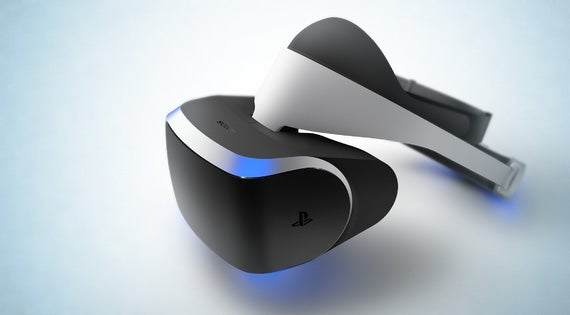
A few years ago it seemed virtual-reality gaming would be remembered as a slightly embarrassing blip in the past. But now everyone is at it. Oculus Rift is far less than a year away from release, while Project Morpheus is proving to be much more than just a game expo experiment.
But which VR headset should you be saving up for? The Facebook-owned, one-time indie kid Oculus Rift or Project Morpheus, the first-party PS4 VR headset?
We’re going to compare the two based on our experiences with the latest prototypes, Oculus Rift Crescent Bay and the GDC 2015 Morpheus demo.
SEE ALSO: Samsung Gear VR review
When are they coming out?
Until recently, VR headsets were at risk of becoming vapourware, products talked about a lot but never released. However, a few of the things have actually been released and even more consumer-driven models are being announced.
Oculus Rift is expected to be released towards the end of 2015, while Sony said at GDC 2015 that Morpheus will be released during 2016. Both could easily be subject to further delays, but for now at least it looks like Oculus Rift will arrive first. 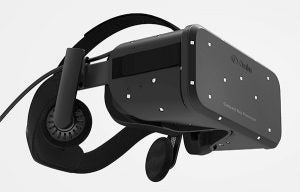
How much will they cost?
As yet there have been no official announcements regarding the pricing of either virtual-reality headset. In a Gamespot GDC 2015 interview with Shuhei Yoshida, we heard the Morpheus price will be “as low as possibly can be done.” But exact figures are a mystery.
With Oculus Rift we have a few more price clues, because developer prototype units have been available to buy for a while now. The DK2 model costs $350, which translates to £232, or £279 when you add the relevant taxes.
The consumer version will have some higher-end components than this DK2 model, but it seems a price under £400 or even £350 wouldn’t be out of the question. As Project Morpheus uses comparable hardware for the most part, we hope to see it arrive at a somewhat similar price. Fingers crossed.
What platforms will they support?
Project Morpheus is the PS4’s VR headset. It’s not going to work with the PS3, and it certainly won’t work with Xbox One.
Depending on whether you own a PS4 or not, this is either Morpheus’s greatest strength or most glaring weakness. Commercially, it provides the headset with perhaps a clearer non-hardcore user base than Oculus Rift. 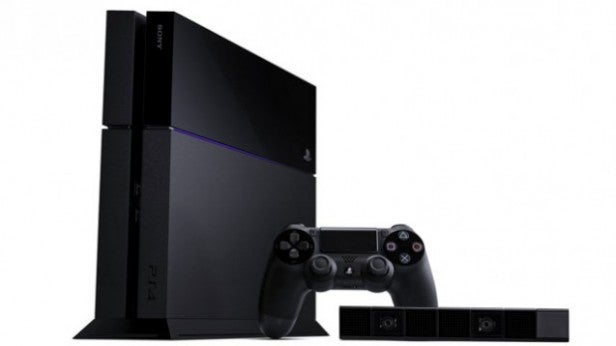
Facebook-owned Oculus Rift supports Windows, OS X and Linux: the computing platforms, basically. This could well make it the enthusiast’s choice, especially when Steam is likely to become the home to most VR indie titles before the more successful ones work their way onto PSN.
There’s a curve ball to consider here too, though. The HTC Vive has just been announced and it is positioned as the official Valve headset. Valve owns Steam, if you didn’t know. Its platforms are likely to be Linux, Mac OS and Windows just like Oculus Rift. It’s another nerdcore VR headset.
Which games will support them?
Right now there’s a fairly big disparity between the games people are expecting on VR and what’s feasible in the short-to-mid term. As well as games needing to be tailored specifically for VR use, the power demands on a system’s GPU are quite intense.
The general consensus is that games need to be rendered at around 95-120fps to provide proper immersion and get rid of motion sickness caused by image judder. That’s a lot to ask of the PS4, which doesn’t get anywhere near that for its triple-A games. An extreme example is The Order: 1886. It’s widely regarded as the best-looking PS4 game yet, but only runs at 30fps.
Play that through Morpheus and you may well get to revisit your lunch.
That’s not to say Morpheus is without higher-end games, though. The most important one announced to date is Project Cars, a sort-of new take on the Gran Turismo serious-ish racer ideal. Project Cars dev Slightly Mad Studios has confirmed its plan to render the game at 60fps. But it may be able to push that even further using dynamic tricks based on the way VR works.
For example, the outside areas of the screen don’t need to anywhere near as high-end-looking as the centre becuase the way our eyes’ focusing working. We’ll have to wait to see what Slightly Mad squeezes out of the PS4, though.
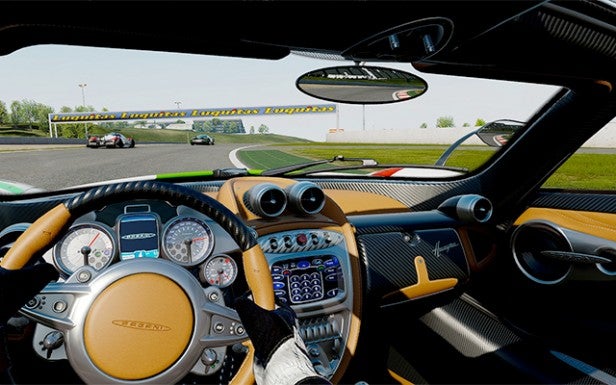
Imagine this, in fully immersive 3D
Sony is expected to use E3 2015 in June to announce the rest of the first-wave of upper-tier Morpheus games. At present we only know of a few, including Eve Valkyrie, War Thunder and Surgeon Simulator.
Thanks to being around for longer and not being tethered to the PS4, Oculus Rift has a bunch more well-known games on its compatibility list. There are well over 100 known titles already, and the headset hasn’t even been released properly. If you include smaller little demos, there are 564 listed on Rift Enabled, a wiki of Oculus Rift support.
The most important include Project Cars, Half-Life 2 and Elite: Dangerous. However, some of the most high-profile others may fall by the wayside: we initially thought (hoped) Oculus would be out by now, and it seems unlikely that something like Dying Light will get a post-release Oculus update.
Regardless, if you’re a real gaming nerd who has a high-end PC, there’ll be many more quirky little experiences to discover on Oculus Rift. Those who just want to take it easy may well prefer the more spoon-fed approach of Project Morpheus, though.
However, thanks to the somewhat-limited power of the PS4, you will ultimately get a “higher-end” experience with Oculus. It’s a simple case of processor power superiority. As far back as 2013, Oculus VR founder Palmer Luckey said, “Consoles are too limited for what we want to do,” talking to TechRadar.
Oculus Rift Crescent Bay vs Project Morpheus: Design and comfort
In a few years we’ll all be laughing at the designs of these early VR headsets. Well, we hope.
Oculus VR and Sony have been working on VR or video headsets for years now, but the latest prototypes both look much like VR headsets did back in the 90s. Want proof? Check out the stories of Sega’s abandoned VR project from 1991/1992. The concept drawings look incredibly similar to what we have today.
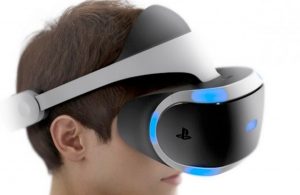
Despite a very sci-fi look, the GDC 2015 Morpheus prototype looks more like the finished article than the latest Oculus Rift prototype, called Crescent Bay. It’s fairly light and uses a single headband that takes any pressure away from sensitive areas like your nose/ears.
Crescent Bay appears more a work-in-progress, with ceremony-free straps that tie around and over your head. It may work and be comfier than previous models, but it’s not exactly glossy.
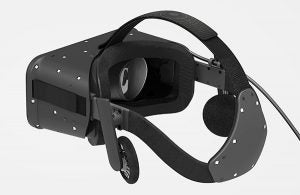
Oculus Rift Crescent Bay vs Project Morpheus: Display and lenses
From a tech perspective, the most important part of a VR headset is the visual experience provided by the combo of the display and the lenses in front of it.
Project Morpheus, at present, uses a 5.7-inch 1,920 x 1,080 OLED panel, providing 960 x 1,080 pixels per eye. Oculus VR has not announced the exact specs of the Oculus Rift Crescent Bay screen, but it’s widely reported to be a 2,560 x 1,440 OLED panel, which would get you 1,280 x 1,440 per eye.
That makes the Oculus Rift sound a lot better, but there are other things to consider. First, Morpheus uses an RGB subpixel matrix where Oculus has a PenTile one. This is a Samsung screen panel type where the pixels share subpixels. It helps to solve some OLED technical issues, but also has a significant negative effect on the perception of sharpness.
This limits, although does not negate, the benefit of those extra pixels, if they exist. We should stress that these reports of increased resolution could be a result of something else, namely…
There are also the optics to consider. Both Project Morpheus and Oculus Rift Crescent Bay use non-standard lenses designed to combat the (fairly extreme) pixellation effects seen in earlier VR headset prototypes. What these lenses do is to put far more of the pixels in centre of your vision that the periphery because it’s where you’ll focus 99 per cent of the time.
Look to the extreme edge of your vision and it’ll be blurry as anything, but the idea is that you’ll move your head more than your eyes. We naturally only focus within a fairly narrow “cone” anyway. Try it: looking at something by peering to the extreme left or right just isn’t comfortable.
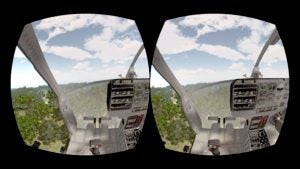
This is the distortion level without even using non-regular lenses
“When you look at how the optics combine with the screen technology… we’re able to achieve a perceptual higher resolution where you can’t see the pixel structure. It’s a very different lens from what we used in DK2,” said Oculus VR’s Nate Mitchell in an interview with Tested.
Of course, this also means the way games need to be rendered is completely different too. Piped out directly to a TV, it’d look hopelessly distorted.
Both headsets provide approximately 100-degree field of view, which is easily enough to cover most of your peripheral vision for that VR-like immersive effect.
Thanks to they use of fast OLED screens, the lag effect of previous prototypes has mostly gone too. In previous iterations, both Oculus Rift and Project Morpheus used slower LCD panels that caused nausea in many. Not to mention just looking rubbish thanks to their slower response times and poorer contrast.
Oculus Rift Crescent Bay vs Morpheus: Head tracking and motion
In these latest prototypes we’ve largely seen VR headsets arrive at a motion tracking setup that’ll for the basis of the first commercial models. That is: 6DoF.
This stands for six degrees of freedom, and enables tracking in three dimensions with tilt plus pitch, jaw and roll. What this means in practice is that if that these VR headsets will track you throughout a room, and monitor any angled movements of your head.
Both Oculus Rift and Morpheus do this with an internal accelerometer/gyroscope plus an external camera that monitors light markers on each of the headsets as you move about. With Morpheus it’ll use the PS4 Camera, although we imagine a package including one (or perhaps a brand new camera) arriving in 2016.
There are more than 20 little lights on the back front and side of the Oculus Rift Crescent Bay, and nine on the Project Morpheus.

The Sony lights are a lot brighter, which can seem annoying if you’re going to use the headset in a dimly lit room, however there is a tech excuse. Using brighter lights will keep them clear to the camera when using very high frequency, fast shutter speed scanning, and will also help in excluding them from ambient light. Let’s remember, a camera lens doesn’t have to see things exactly as our eyes do.
Oculus Rift Crescent Bay vs Morpheus: Controller
Oculus VR founder Palmer Luckey has spoken out about how he thinks gamepads are useless for VR. But what controller will Oculus Rift use? At present we just don’t know, and as the headset is not linked to a closed system in the same way as Project Morpheus, it’s really down to the developer.
However, there are clues that Oculus VR plans to support the headset with an ‘official’ controller.
Oculus VR acquired Carbon Design in early 2014. This was the team behind the incredibly well-regarded Xbox 360 controller, although we expect to see, at the very least, a controller with a separate part for each hand rather than something gamepad-like.
And for the Morpheus? Well Sony came up with a suitable controller absolutely ages ago. PS Move was announced (under another name) all the way back at E3 2009, and while virtually seemed to care about it as a motion gaming accessory, it should prove to be just about perfect for Morpheus.
Pocket-lint talked to Shuhei Yoshiba, head of Sony Worldwide studios, on the matter back in 2014:
“What we are realising ourselves is that PS Move was a bit ahead of its time – a precise and accurate 3D input device. We were very excited about the possibility of using 3D positional tracking to make games, but it’s really hard to do so with a regular 2D screen,” he said.
Seven years on maybe we’ll see what Move is really capable of. Of course, we’ll probably see Move given an update next year alongside Project Morpheus’s release. 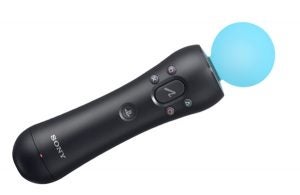
Oculus Rift Crescent Bay vs Morpheus: Audio
3D audio was added to the last Crescent Bay Oculus prototype in what some saw as an ‘icing on the cake’ move, but it’ll actually be a very important part of VR gaming. It doesn’t involve a half-dozen miniature speakers pointing at each ear but clever digital signal processing that provides accurate positional audio with just two standard headphone speakers.
That said, Oculus VR head Palmer Luckey has banged on quite effusively about how the clip-on earpieces of the Crescent Bay prototype have been totally tailored for the 3D audio processing, and are actually of very good quality. We’ll have to wait for our review sample to see if the final version actually ends up with decent inbuilt headphones.
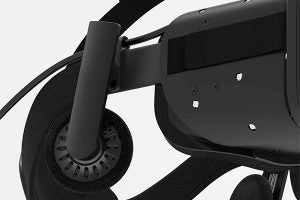
Project Morpheus has 3D audio too, and Sony actually has quite a lot of experience in this area. While we’re not sure how much of the knowledge would make it from Sony Audio to the Morpheus team, if the surround effect is anywhere near as good as the Sony MDR HW700 in the final version we’re in for a treat.
Oculus Rift Crescent Bay vs Morpheus: Connectivity
Before we finish, a quick note on connectivity. Both VR headsets use a breakout box that reduces the number of cables snaking into the head unit itself to one.
Neither headset is wireless, and it seems very unlikely we’ll see such functionality in generation one (in retail terms) of these devices. Low price matters matters more than wireless at this point.
Early Verdict
Which VR headset is better? Let’s be clear: at this point it’s too early to tell. As Palmer Luckey has said, “everything in Crescent Bay is work in progress. Nothing is final.” And that stands for the current version of Project Morpheus too, especially as that headset isn’t due until 2016.
However, with each iteration we’re seeing these headset makers coalesce around a few core design decisions. Image-distorting lenses, OLED displays and 3D audio are all orders of the day for the upcoming headsets.
What you should probably focus on is what sort of gamer you are. This should define which, if any, you’ll be interested in. Console gamer? Forget Rift for now, and don’t get obsessed with Project Morpheus until we hear more in June at E3 2015.
PC gamer with a good gaming PC? Feel free to get knee deep in the Oculus Rift excitement. There’s plenty to check out already. But don’t buy a dev prototype, as the one you can currently buy doesn’t even have the modifications we’ve talked about in this article.


